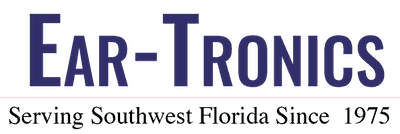Working with hearing loss can be stressful. Hearing loss reduces a person’s ability to hear and process sound which impacts communication. Managing work responsibilities, completing work tasks, and working with others can present unique challenges when you have hearing loss. Additionally, work environments can often be noisy – it is estimated that over 22 million people are exposed to hazardous noise levels in the workplace. This can exacerbate hearing loss symptoms so knowing how to navigate the workplace safely is also important. There are strategies you can practice to prioritize your hearing health and needs while also successfully managing your work life.
1. Disclose your hearing loss. It is common to think about whether you should disclose your hearing loss with your employer. Talking about personal health matters can be difficult and you likely want to avoid having others think that you aren’t able to perform your job effectively. While it is normal to have these anxieties, it is incredibly important to share your hearing loss. This offers significant benefits that will support your hearing health in the workplace. It allows you to start the process of accessing workplace accommodations, invites others to participate in creating a more accessible work environment, and also lets people you work with and interact with on a daily basis know that you may require adjustments in order to engage in effective communication.
2. Maximize use of hearing aids. Hearing aids are the most common treatment for hearing loss. These electronic devices are essential items, providing ample support with hearing. It is important to wear hearing aids during waking hours and there are also ways you can maximize their use. Today’s hearing aids offer a range of features and technologies that deliver sharp sound quality and increased connectivity. This includes digital noise reduction, wireless connectivity, tinnitus management, voice recognition and more. These features support hearing in everyday settings, making it easier to hear in especially challenging environments like workplaces.
3. Access workplace accommodations. A major benefit of disclosing hearing loss is that it allows you to access workplace accommodations. It is important to know about your rights when it comes to hearing loss, starting with the Americans with Disabilities Act which was passed in 1990. The ADA prevents employers from discrimination on the basis of disability and it requires them to provide accommodations that make the work environment more accessible.
Workplace accommodations include resources and technologies that support hearing needs so that people are able to navigate the workplace more successfully. Examples include: technologies like live audio transcription, hearing aid compatible phones, making adjustments to the workplace, providing hearing protection etc. It is important to discuss the options with your employer so you can identify what would work best for you.
4. Take advantage of technology. In addition to hearing aids, there are other types of technologies that you can take advantage of to support your hearing in the workplace. This includes assistive listening devices as well as hearing aid accessories. Assistive listening devices include hearing loops which are often in public spaces. Hearing loops allow hearing aids to stream audio directly which means the audio can be adjusted in specific ways to meet your hearing needs. Hearing aid accessories include personal microphones, remotes, voice assistants etc. which also provide greater hearing support. Be sure to explore your options with your hearing healthcare provider.
5. Share communication strategies. There are numerous communication strategies that you likely know of which support your hearing. It is important to share these strategies with the people you work with so that everyone can participate in effective communication. Examples include:
- Grabbing your attention before starting a conversation. Others can do this by calling your name or tapping you on the shoulder.
- Rephrasing rather than repeating if you haven’t heard something.
- Speaking in a natural voice, taking pauses between sentences.
- Reducing background noise as much as possible.
- Avoiding multitasking to reduce distractions.
- Sending detailed information via email or text.
These strategies can help facilitate smoother conversations and more effective communication.
6. Prioritize your hearing health. It is important to advocate for your hearing needs in the workplace. Avoid pretending to hear or struggling through a conversation. Rather, ask for clarification and the adjustments you need so that your hearing is better supported.
Practicing these strategies can help you navigate the workplace more successfully. Contact us today to learn more about the resources available to support you!

